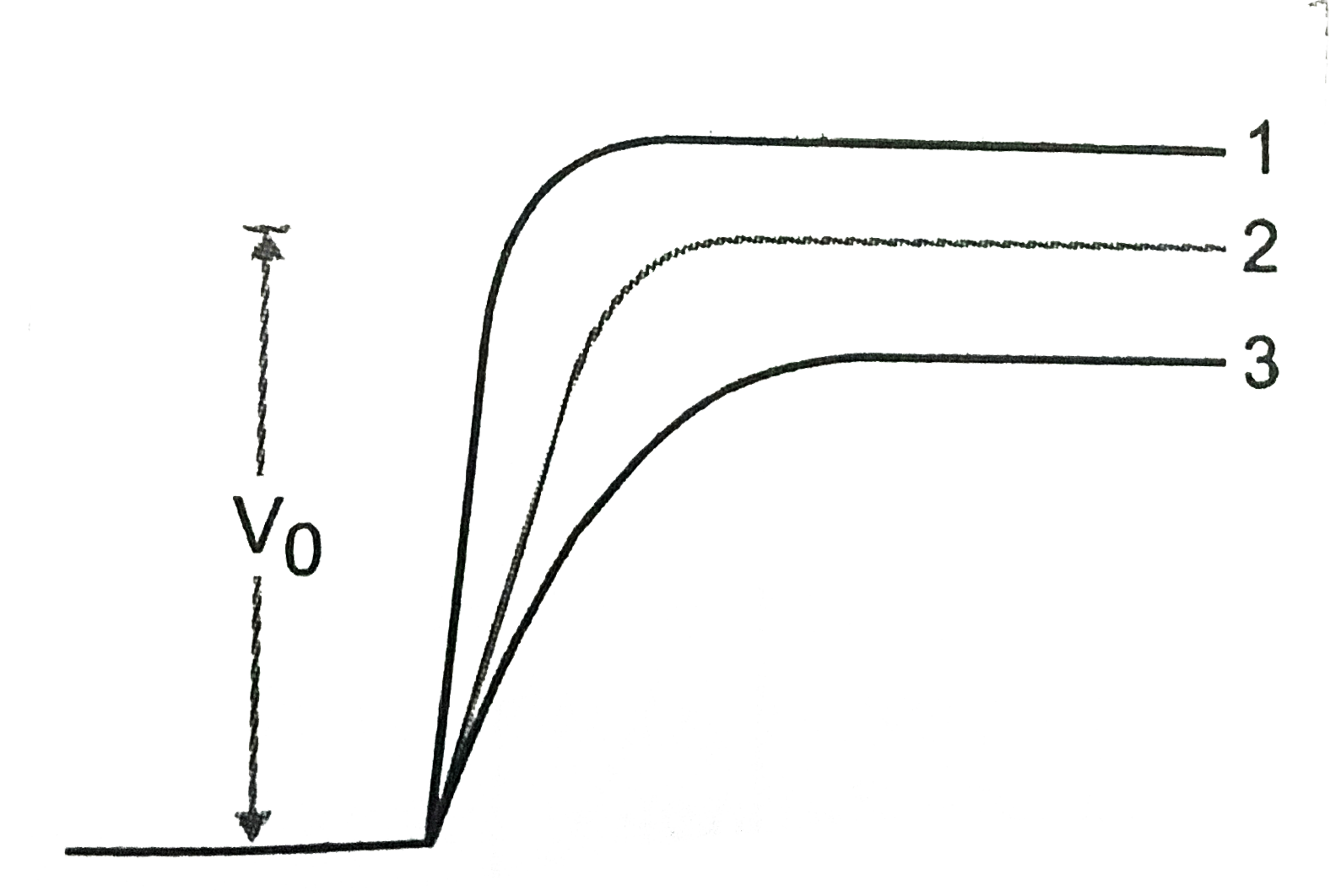Can the potential barrier across a p-n junction be measured by simply connecting a voltmeter across the junction? Solution in Gujrati
Nom, because in this case, no current passes obtained in it. (Reason is : we know that barrier potential is the potential difference between the boundaries of deplection layer. Since there are no free charge carriers in the depletion layer, if we connect voltmeter across these boundaries, no current passes through it and hence barrier potential can not be measured by connecting voltmeter).
Topper's Solved these Questions
- SEMICONDUCTOR ELECTRONICS : MATERIALS, DEVICES AND SIMPLE CIRCUITS Book:KUMAR PRAKASHANChapter:SEMICONDUCTOR ELECTRONICS : MATERIALS, DEVICES AND SIMPLE CIRCUITS Exercise:Section-C: NCERT Exemplar Solution (Short Answer Type Questions)
Explore 8 Videos
- SEMICONDUCTOR ELECTRONICS : MATERIALS, DEVICES AND SIMPLE CIRCUITS Book:KUMAR PRAKASHANChapter:SEMICONDUCTOR ELECTRONICS : MATERIALS, DEVICES AND SIMPLE CIRCUITS Exercise:Section-C: NCERT Exemplar Solution (Long Answer Type Questions)
Explore 10 Videos
- SEMICONDUCTOR ELECTRONICS : MATERIALS, DEVICES AND SIMPLE CIRCUITS Book:KUMAR PRAKASHANChapter:SEMICONDUCTOR ELECTRONICS : MATERIALS, DEVICES AND SIMPLE CIRCUITS Exercise:Section-C: NCERT Exemplar Solution (Multiple Choice Qustion (More than One Options))
Explore 8 Videos
- SAMPLE QUESTION PAPER Book:KUMAR PRAKASHANChapter:SAMPLE QUESTION PAPER Exercise:PART-B SECTION-C
Explore 5 Videos
- WAVE OPTICSBook:KUMAR PRAKASHANChapter:WAVE OPTICSExercise:SECTION-D (MULTIPLCE CHOICE QUESTIONS (MCQS)) (MCQS FROM DARPAN BASED ON TEXTBOOK)
Explore 239 Videos
Similar Questions

(i) Name the type of a diode whose characteristics are shown in figure (1) and figure (2).
(ii) What does the point P in figure (1) represent?
(iii) What does the points P and Q in figure (2) represent?
View Solution
If each diode in figure has a forward bias resistance of 25Ω and infinite resistance in reverse bias, what will be the values of the current I1,I2,I3andI4?
View SolutionWhen an electric field is applied across a semiconductor
View SolutionTwo charges –q and +q are located at points (0, 0, –a) and (0, 0, a), respectively.
(a) What is the electrostatic potential at the points (0, 0, z) and (x, y, 0) ?
(b) Obtain the dependence of potential on the distance r of a point from the origin when r/a>>1 .
(c) How much work is done in moving a small test charge from the point (5,0,0) to (–7,0,0) along the x-axis? Does the answer change if the path of the test charge between the same points is not along the x-axis?
View SolutionAccording to particle theory of light what is the velocity of light in a dense medium, compared to that in rare medium ?
View SolutionCan the potential barrier across a p-n junction be measured by simply connecting a voltmeter across the junction ?
View SolutionCan we measure the potential difference of a p-n junction by putting a sensitive voltmeter across its terminals?
View SolutionIn Fig . V0 is the potential barrier across a p-n junction, when no battery is connected across the junction

View SolutionIn Fig. V_(0) is the potential barrier across a p-n junction, when no battery is connected across the junction : .
View SolutionCan the potential barrier across a p−n junction be measured by simply connecting a voltmeter across the junction ?
View SolutionCan the potential barrier across a p−n junction be measured by simply connecting a voltmeter across the junction ?
View SolutionCan the potential barrier across a p-n junction be measured by simply connecting a voltmeter across the junction ?
View Solution
In figure, Vo is the potential barrier across a p-n junction, when no battery is connected across the junction.
View SolutionCan the potential barrier across a p−n junction be measured by simply connecting a voltmeter across the junction ?
View SolutionIn Fig . V_(0) is the potential barrier across a p-n junction, when no battery is connected across the junction
View Solution

